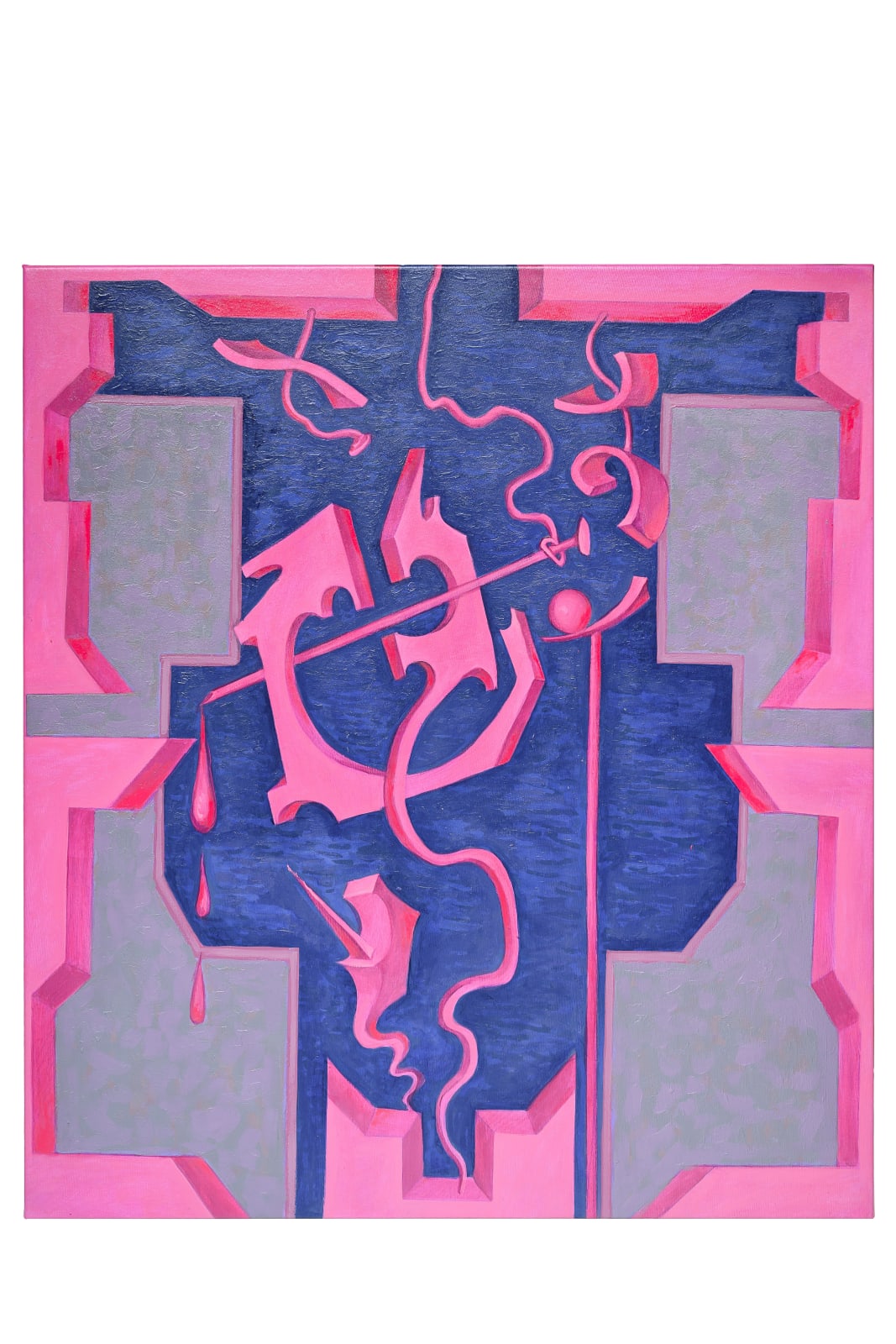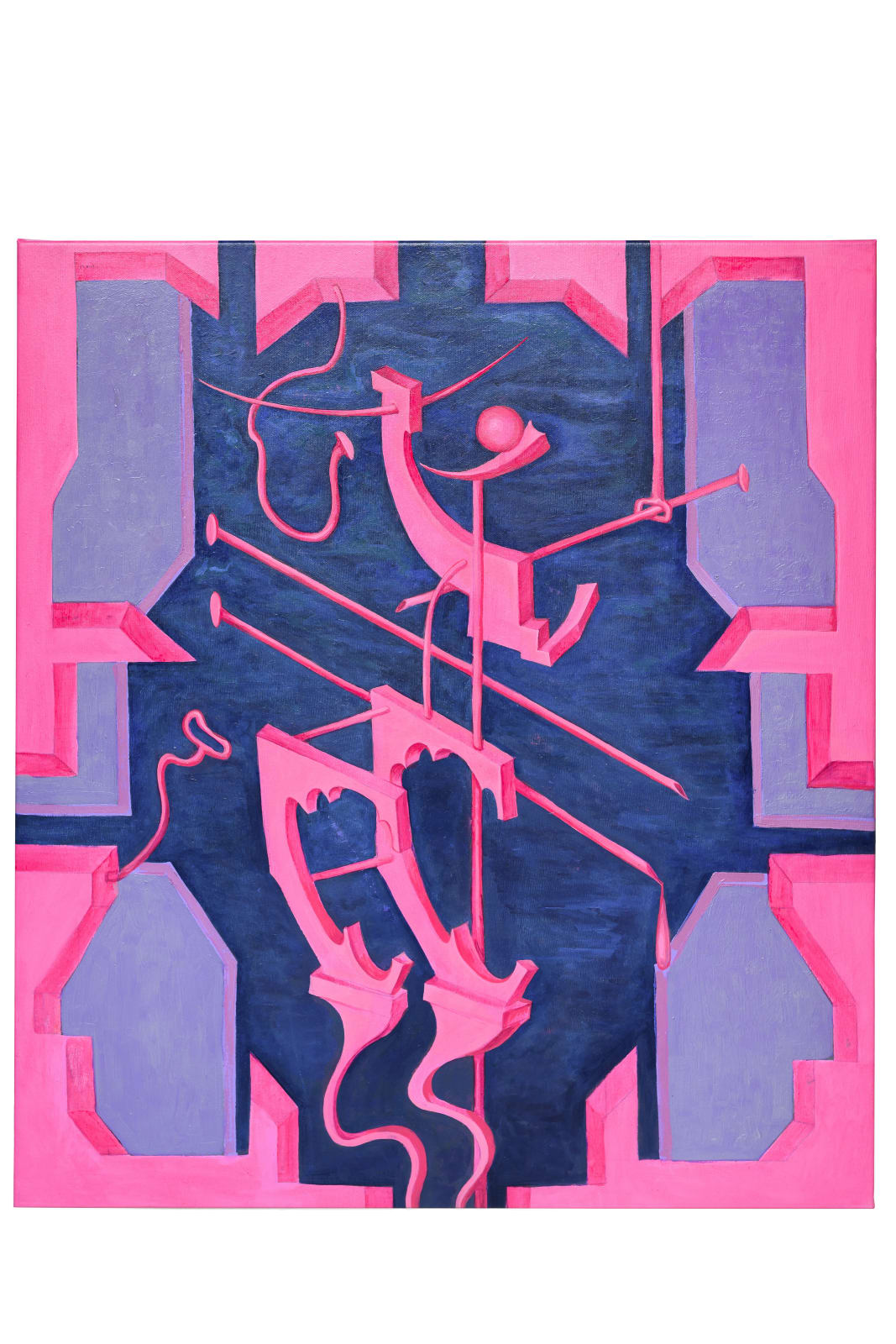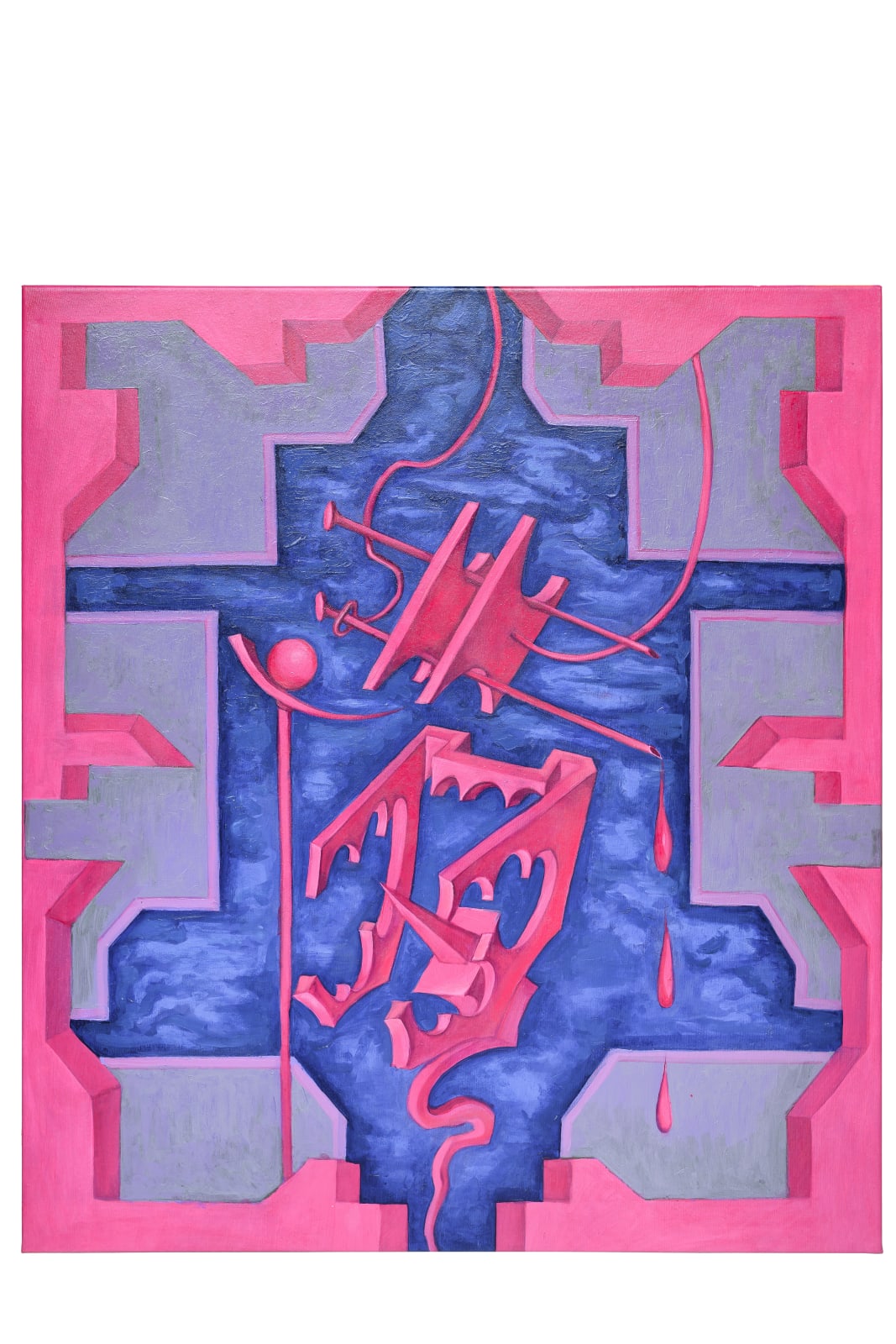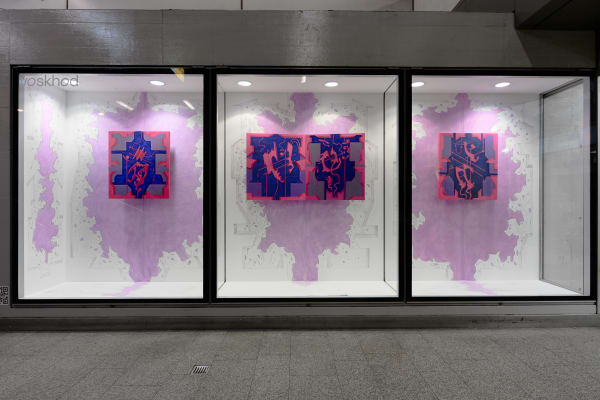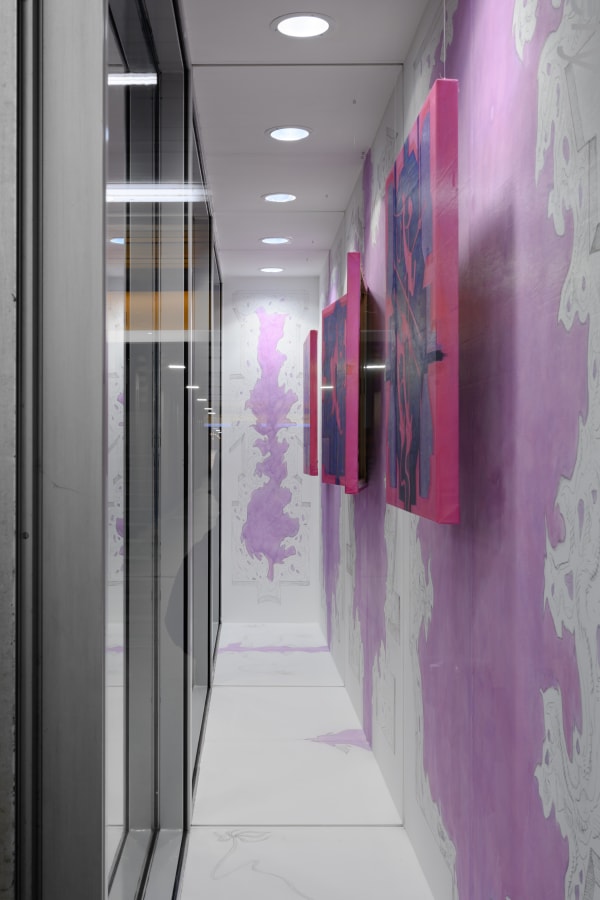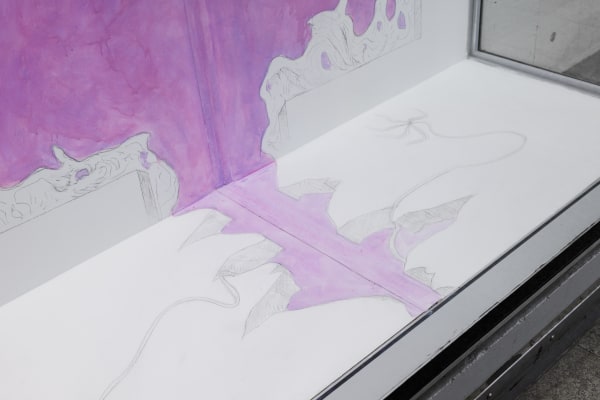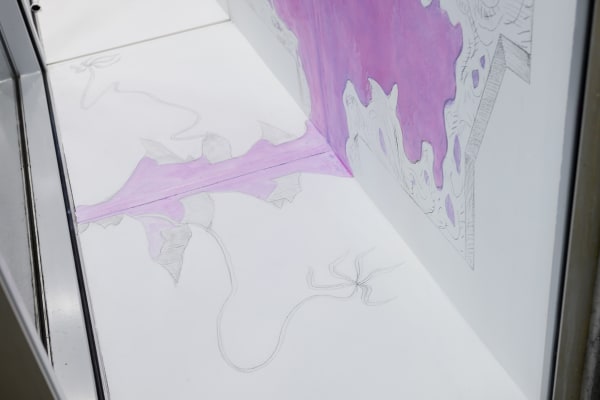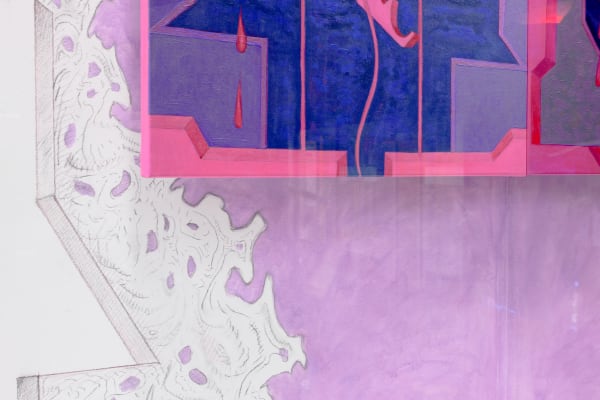Frame of Sorrow
"Excessive pretentiousness and excessive figurativeness in my works are what I strive for and I often hear reproaches just for this."
It's common to think that the "now" goes hand in hand with our actions toward achieving results in the future. More and more often though, the structure of the temporal canvas and eventfulness is corrected by hyperstitions - information-thinking attitudes on the periphery of magical and technical-progressive thinking, which are capable of turning ideas into reality. In the theoretical works on the new temporality in media production, one can observe certain shifts: from the perspective of the widespread strategies of preemption and premediation, aimed at preparing the audience for something terrible, a different temporal logic is unfolding, where the current complex of time “here and now” comes from the future, but not vice versa.
In the new “Frame of Sorrow” series, Anton Kushaev interprets grief and loss as a general social state — a foretaste of the end of everything, ahead of the eventfulness. The artist captures how the practices of anticipating an apocalyptic future brought closer by hyperstitious aspirations become part of our everyday life, as a result of which we plunge into permanent anxiety rather than prevent an undesirable outcome.
The artistic practice of Anton Kushaev is based on figurativeness, with the inherent complexity of expressing and producing new forms and meanings in the context of art history. His painting comes into contact with the surrealist direction at the point of interest in social contradiction and mental conflict. The optics of the surreal turns out, on the one hand, an effective method of fixing and criticizing reality, and on the other hand, a way of accessing reality. Important features in Anton's works are oversaturated, obsessive imagery, amplification and hyperbolization. Hyperbolization as a way of defining boundaries, through the denial and promotion of topics to the state of hyper.
The space of the Voskhod Gallery is a specific frame for the artist's work. The showcase, located in the passage by the railway station, surrounded by technogenic visual and urban solutions, changes the optics of art perception and the method of working on the exposition. The work on the series and the exhibition was formed through the construction of a frame in which the technogenic and manual, ritual and digital collide. Kushaev exaggerates the very idea of a shop window, layering several levels of writing and creating a portal from frames. A technique similar in nature to automatic writing is used. Anton's automatism is based on intuitive configurations of pictorial elements, layered on top of each other into an installation frame. Like a changed, broken coordinate system in icon painting, as if a perspective squeezed out to the viewer, the perception of a site-specific exposition-in-showcase is broken. The showcase transforms into a self-sufficient agent, falling out of the surrounding context. This agent manifests itself as a mystical portal of grief within the technogenic world, sucking into irrational anxiety on the periphery of the "future" and "here and now".
It's common to think that the "now" goes hand in hand with our actions toward achieving results in the future. More and more often though, the structure of the temporal canvas and eventfulness is corrected by hyperstitions - information-thinking attitudes on the periphery of magical and technical-progressive thinking, which are capable of turning ideas into reality. In the theoretical works on the new temporality in media production, one can observe certain shifts: from the perspective of the widespread strategies of preemption and premediation, aimed at preparing the audience for something terrible, a different temporal logic is unfolding, where the current complex of time “here and now” comes from the future, but not vice versa.
In the new “Frame of Sorrow” series, Anton Kushaev interprets grief and loss as a general social state — a foretaste of the end of everything, ahead of the eventfulness. The artist captures how the practices of anticipating an apocalyptic future brought closer by hyperstitious aspirations become part of our everyday life, as a result of which we plunge into permanent anxiety rather than prevent an undesirable outcome.
The artistic practice of Anton Kushaev is based on figurativeness, with the inherent complexity of expressing and producing new forms and meanings in the context of art history. His painting comes into contact with the surrealist direction at the point of interest in social contradiction and mental conflict. The optics of the surreal turns out, on the one hand, an effective method of fixing and criticizing reality, and on the other hand, a way of accessing reality. Important features in Anton's works are oversaturated, obsessive imagery, amplification and hyperbolization. Hyperbolization as a way of defining boundaries, through the denial and promotion of topics to the state of hyper.
The space of the Voskhod Gallery is a specific frame for the artist's work. The showcase, located in the passage by the railway station, surrounded by technogenic visual and urban solutions, changes the optics of art perception and the method of working on the exposition. The work on the series and the exhibition was formed through the construction of a frame in which the technogenic and manual, ritual and digital collide. Kushaev exaggerates the very idea of a shop window, layering several levels of writing and creating a portal from frames. A technique similar in nature to automatic writing is used. Anton's automatism is based on intuitive configurations of pictorial elements, layered on top of each other into an installation frame. Like a changed, broken coordinate system in icon painting, as if a perspective squeezed out to the viewer, the perception of a site-specific exposition-in-showcase is broken. The showcase transforms into a self-sufficient agent, falling out of the surrounding context. This agent manifests itself as a mystical portal of grief within the technogenic world, sucking into irrational anxiety on the periphery of the "future" and "here and now".

